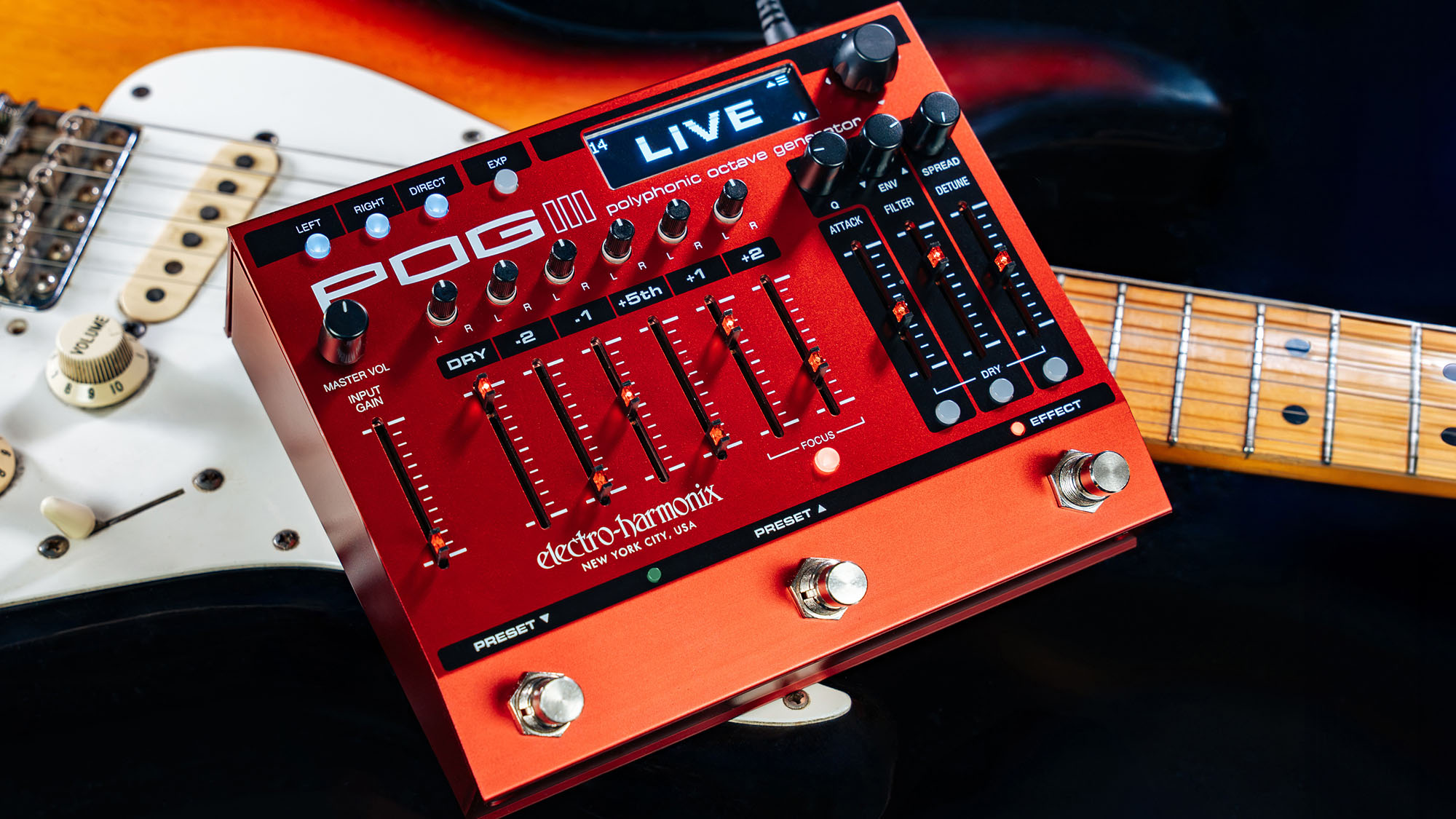
A year is a long time in guitar effects. It was around this time last year when Electro-Harmonix unveiled the Pico POG, the most compact version of its much-loved polyoctave generator pedal yet. It couldn’t get any smaller, so where the design go next? Well, we have the answer – it’s the POG3, possibly the most ambitious pedal the NYC company has ever made.
You could call the POG3 a POG on steroids, or at least a very high-protein diet. But once you read through the spec sheet, it’s clear that this is not just an expansion of the concept; it’s like the original POG was bitten by a radioactive Pico POG and this is the result.
At the heart of the POG3’s functions are the sounds themselves, and this time around we have six different voices to play with: DRY, -2 OCT, -1 OCT, +5TH, +1 OCT, +2OCT. Each of these voices has its own slider control and individual L/R pan dial so you can control how you want to present these sounds across the stereo spread.
Once again, EHX promises lightning-fast tracking these effects – which is why the POG has become the choice of pros such as Joe Satriani and Jack White when it comes time to send their electric guitar muscling in on the bass guitar’s low-end real estate, or, indeed, for sending it the other way, making it sound like horn or keys.
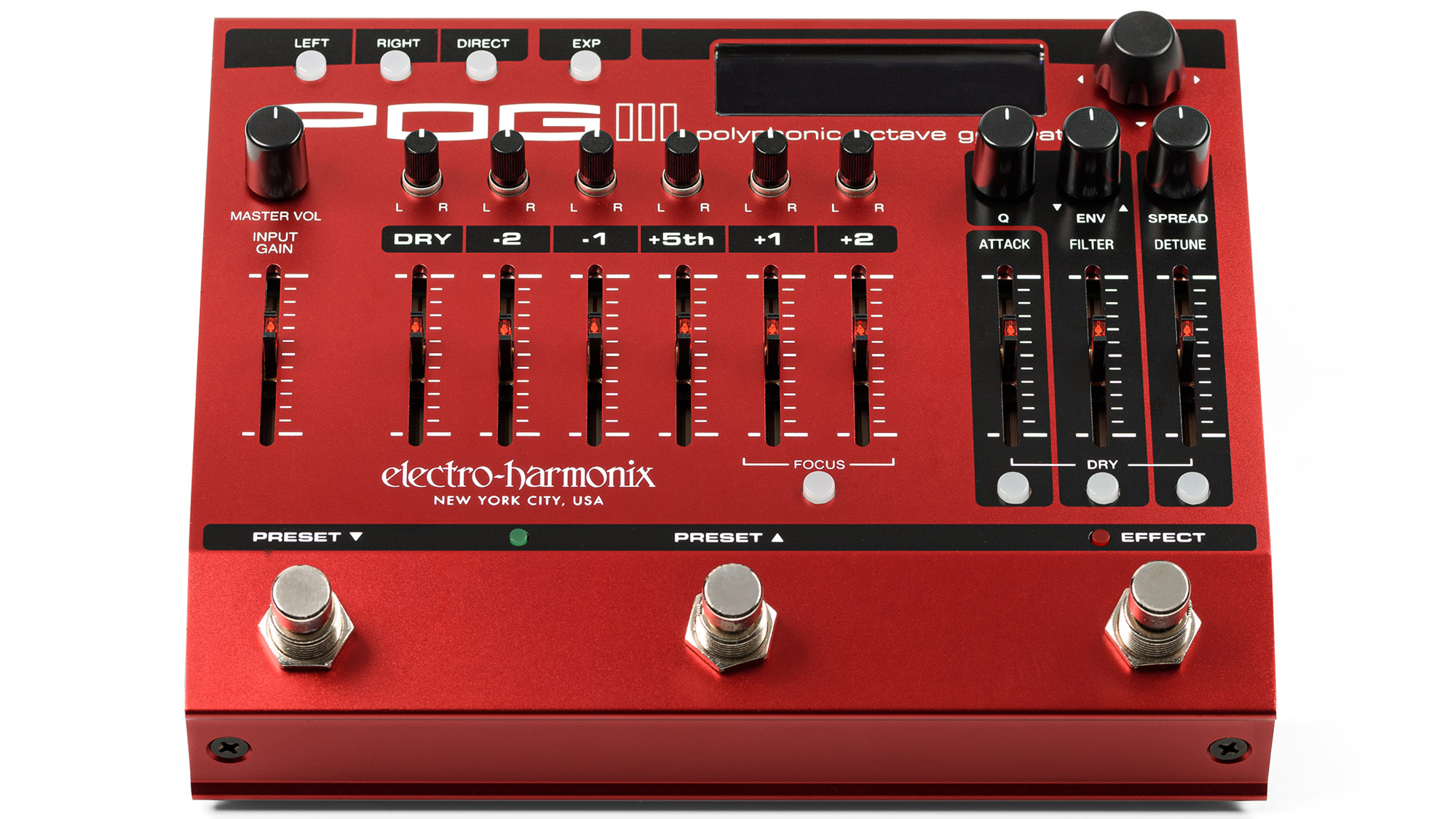
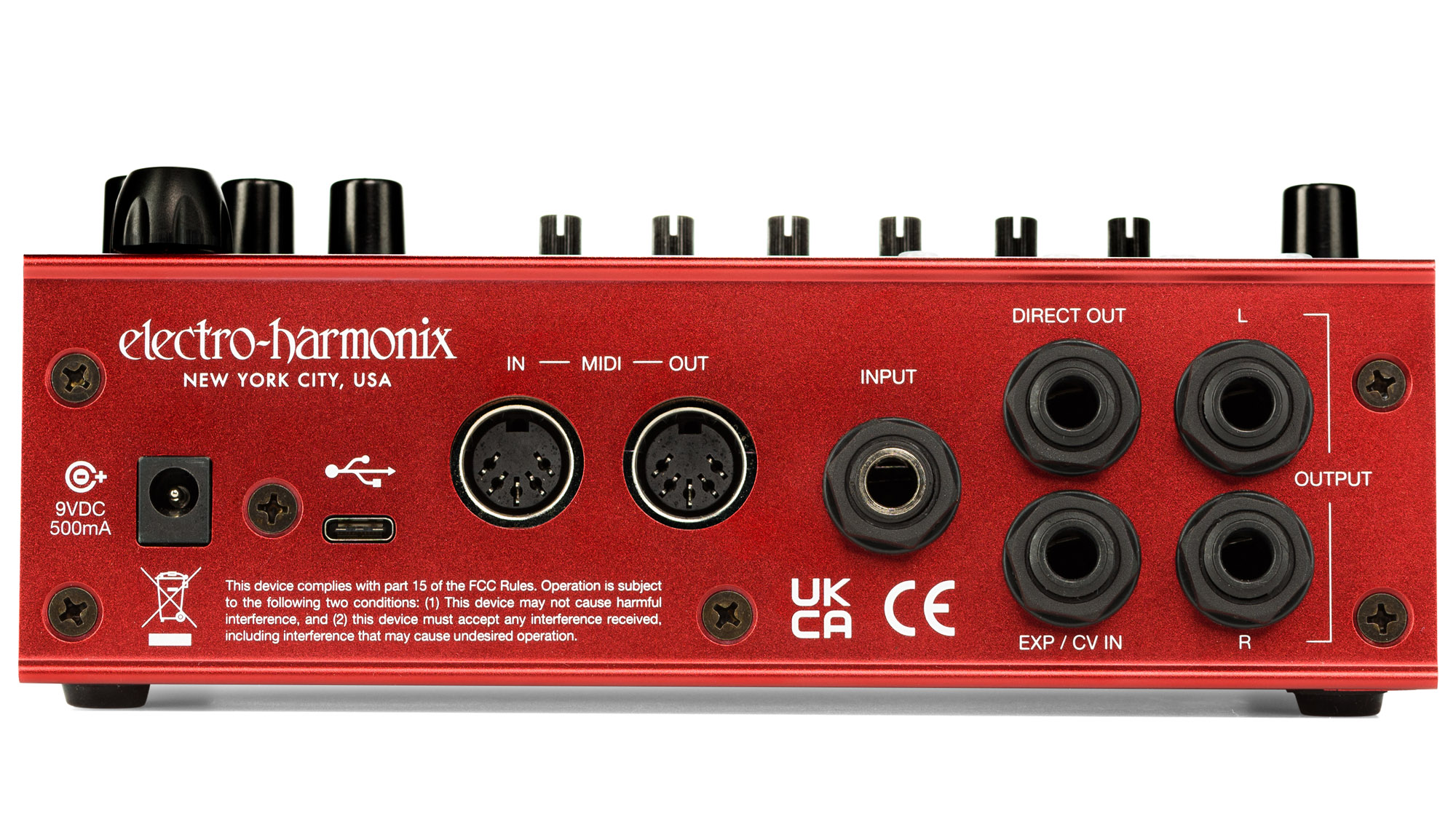
You can apply Attack, Filter and Detune controls to these sounds. Again, all three modification effects have slider controls. Attack allows you to increase the attack time of the octave voicing, creating a volume swell effect.
Filter applies a resonant filter with a Q dial to adjust the resonance – and make it more pronounced – and an Envelope knob to adjust the depth of the filter’s sweep in either direction, up or down, while noon turns the filter off. The filter’s slider control sets the centre/cutoff frequency of the filter.
Detune is interesting. This adjusts the amount of chorus/doubling applied to the octave up effects. A Spread dial, meanwhile, adds a short delay line, with 150ms applied to the right channel, 50ms to the left, making for a wider stereo spread. This should interact nicely with those pan knobs you have for each of the effect voicings.
There is a slider controlling input gain control, just like the original, a dial for master volume out. Once you have dialled in your sounds, POG3 allows you to save them, with 100 preset slots available.
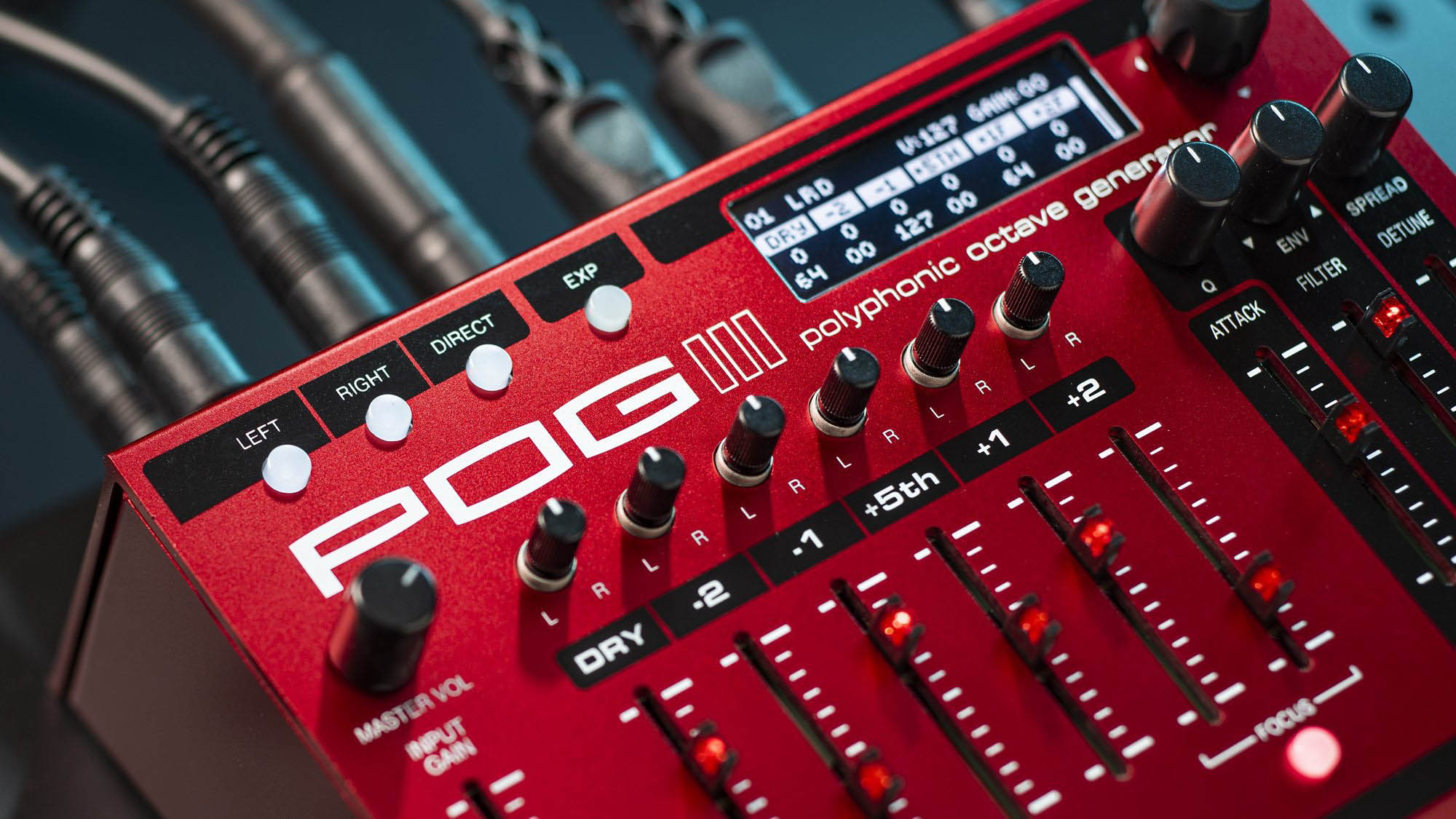
We also have a bright OLED display, two dedicated footswitches and a Navcoder knob for adjusting, saving and browsing presets on the device, but you can also hook it up to USB or MIDI for deep edits and preset management. You can control every parameter via MIDI, or indeed via an expression pedal.
The third-generation flagship POG offers Freeze, Glissando, Volume, Filter, X-Fade, and Warp performance effects, with the Focus buttons toggling the algorithm for the octave effects between the original POG sound and the Pitch Fork.
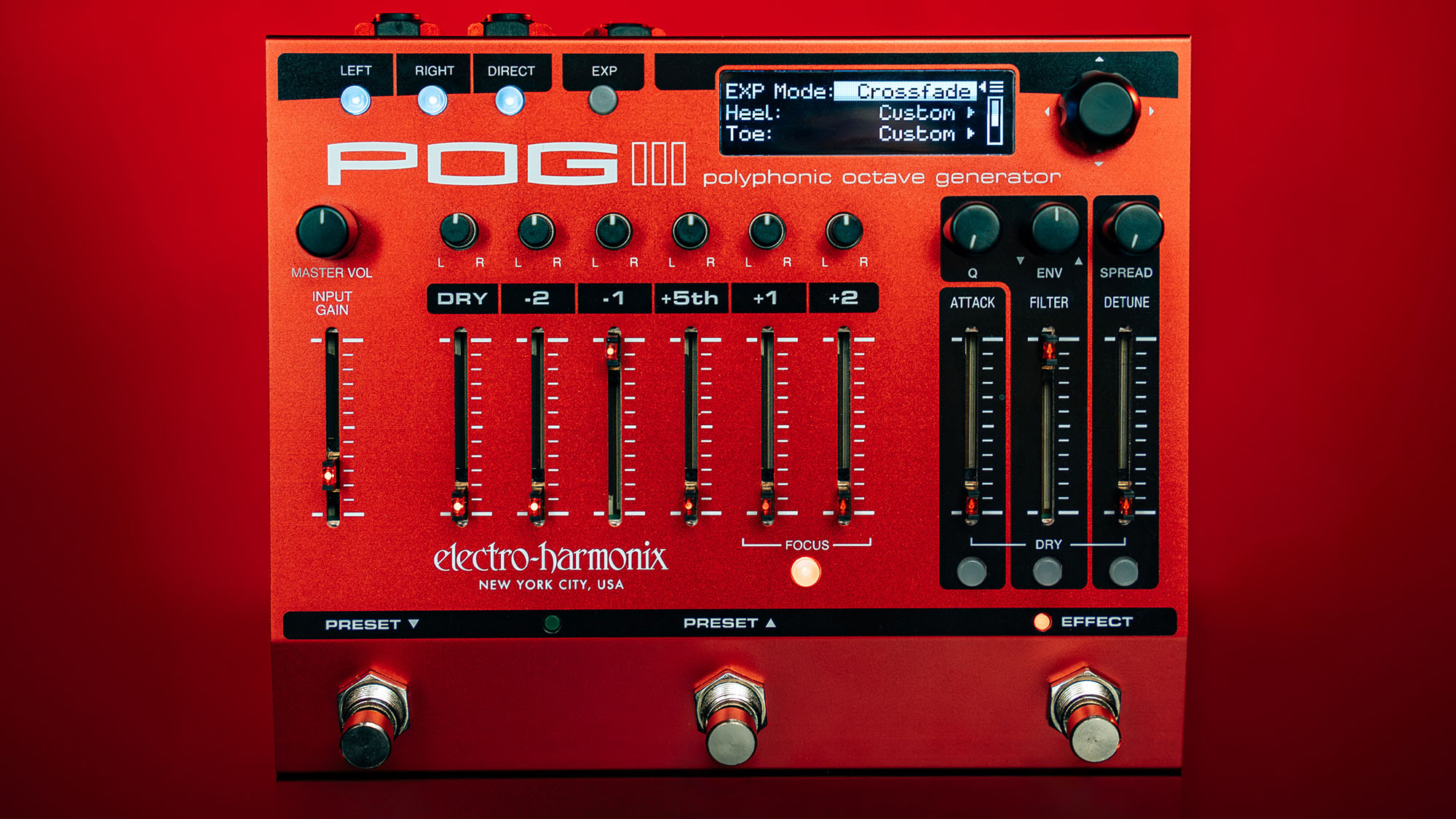
A third footswitch turns the effect on and off. There are a trio of 1/4” instrument outputs, each activated by a push-button, so you can get really creative with how your signal is split and what sounds you want to hear.
No guitar? No problem. You can hook the POG3 up to a MIDI keyboard and use it as an organ/synthesizer. At $645, the POG3 is not cheap but it does not want for features or sounds. This is a serious piece of kit for your pedalboard. For more details, see Electro-Harmonix.







